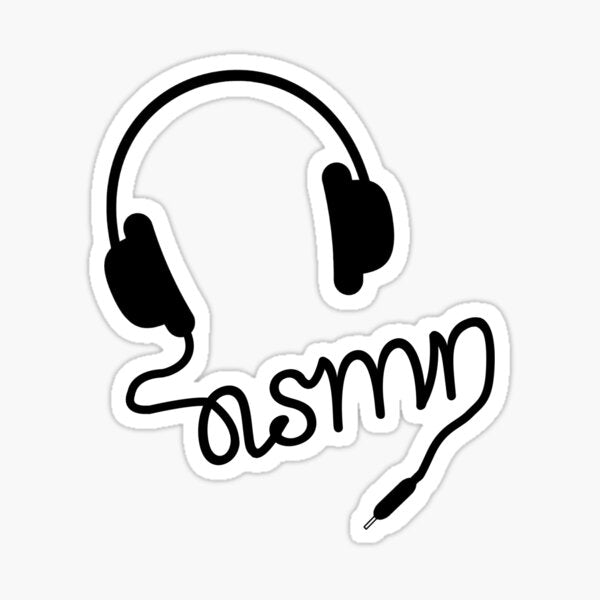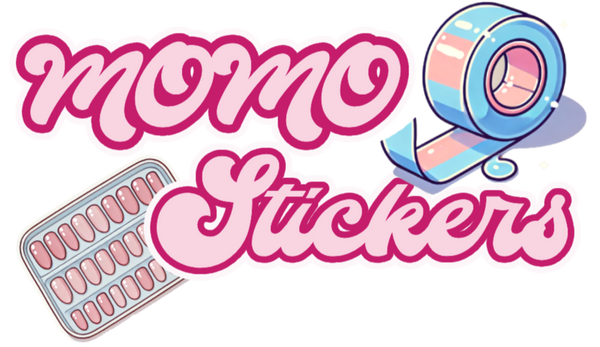
What Does ASMR Stand For On Social Media?
Share
In today’s digital age, ASMR has become a popular trend across various platforms, especially on social media. From Instagram to YouTube, people are sharing videos and posts that provide unique sensory experiences. One of the most interesting integrations of ASMR on social media is through artistic creations, like "3D scene stickers ASMR," which combine visual aesthetics with auditory triggers to enhance relaxation and mental well-being. In this article, we will delve deeper into what ASMR means in different contexts on social media, with a particular focus on how brands like Momo Stickers are using 3D scene stickers to create sensory experiences that resonate with a wide audience.
What Does ASMR Mean on Instagram?
ASMR, or Autonomous Sensory Meridian Response, refers to the tingling sensation people often experience on their skin, typically on the scalp or back of the neck, when they hear certain sounds or see specific visuals. On platforms like Instagram, ASMR has evolved into a highly engaging form of content. Creators often post short videos or static images designed to elicit these calming sensations, using sound, texture, and visuals to trigger a relaxing response.
ASMR Triggers in Sticker Art
On Instagram, ASMR content ranges from sound-focused experiences, like the gentle tapping of objects or soft whispers, to visual-focused experiences, such as watching someone delicately peel stickers from a sheet. This is where "3D scene stickers ASMR" comes into play—sticker art that combines the tactile nature of stickers with calming, soothing sounds. Momo Stickers, for example, posts videos of ASMR landscaping stickers, where the peeling and placing of each sticker is intentionally recorded to generate a pleasing, sensory sound experience. These videos not only showcase the brand’s products but also tap into the growing trend of relaxation through sensory experiences.
The process of creating ASMR content with 3D stickers is an art form in itself. The sounds produced when 3D stickers are peeled, adhered, or moved on surfaces often have a unique texture that can induce a sense of relaxation or comfort. For Momo Stickers, incorporating ASMR into their social media strategy helps them create a sensory-rich experience that goes beyond mere visual aesthetics. It's about creating an immersive world that blends sound, sight, and tactile interaction.
Aesthetic Appeal
What’s also remarkable about 3D scene stickers ASMR is the way these stickers come to life on Instagram. The combination of visually appealing designs and the sound of sticker movements creates a sensory experience that’s uniquely suited for the platform. With thousands of users watching these videos, it’s no wonder that Momo Stickers’ Instagram, for instance, has become a popular destination for those seeking a moment of tranquility through sticker art. The vibrant 3D stickers transform ordinary posts into dynamic, interactive content that fosters a deeper connection with the audience.
What Is ASMR in Pop Culture?
ASMR has transcended its initial niche in online communities and found its place in mainstream pop culture. What started as a quiet, personal experience for a select few has now become a trending phenomenon that influences everything from entertainment to wellness. As more people have discovered the benefits of ASMR, brands and creators have adapted by incorporating it into various aspects of modern culture, including art, design, and even marketing strategies.
The Evolution of ASMR
ASMR first gained attention on YouTube, where creators shared videos featuring sounds and visuals designed to trigger the tingling sensation. These videos often include elements like tapping, crinkling, whispering, and even eating sounds. However, the rise of ASMR in pop culture has expanded beyond YouTube and into platforms like Instagram, TikTok, and even podcasts. The beauty of ASMR lies in its versatility—there are no limits to how it can be used to enhance the senses, and it’s found in everything from simple art forms to high-end technology.
3D Stickers in Pop Culture
The pop culture of ASMR has even embraced niche forms of art like "3D scene stickers ASMR." This merging of tactile art with sound therapy is gaining momentum among those who appreciate the calming effects of both visual and auditory experiences. The trend of DIY stickers, sticker crafts, and sticker art has also gained a foothold in the ASMR community, with many creators now turning to these mediums to provide a multi-sensory experience.
Momo Stickers is a great example of a brand that’s utilizing the ASMR trend in pop culture. Their 3D scene stickers don’t just serve as a simple decorative product, but they’re part of an immersive sensory experience. Their posts on Instagram showcase various DIY projects, where the sounds of peeling, placing, and adjusting these stickers provide ASMR enthusiasts with a unique, relaxing activity. Through this creative combination of art and sensory experiences, Momo Stickers successfully taps into the intersection of ASMR and pop culture.
Sound Healing and Sticker Art
ASMR’s popularity has also been tied to its association with sound therapy and relaxation techniques. People seeking stress relief, anxiety management, or simple mental relaxation often turn to ASMR content to help them unwind. Stickers, especially 3D scene stickers, play into this trend by offering an engaging, visually appealing experience that combines sound and art for a therapeutic effect.
Sound healing is another aspect of ASMR that plays a significant role in pop culture. As ASMR creators experiment with different sounds, the therapeutic potential of these sensory experiences continues to grow. The sounds produced when peeling a sticker, for example, can evoke a calming response in the listener, which is why many ASMR artists include these sounds in their videos. Momo Stickers, in particular, leverages this idea by focusing on how their sticker designs and the sounds they produce can offer relaxation and well-being. The texture of their stickers adds a layer of depth to the overall experience, making it even more therapeutic.
Summary
ASMR, which stands for Autonomous Sensory Meridian Response, has become a widespread phenomenon across social media platforms, and its influence continues to grow. On Instagram, ASMR takes many forms, including the integration of 3D scene stickers into the content. The tactile and auditory experience of peeling, placing, and adjusting stickers is incredibly popular among ASMR enthusiasts. This unique blend of sticker art, sound therapy, and DIY creativity forms a multi-sensory experience that resonates with individuals seeking relaxation and stress relief.
Pop culture has embraced ASMR in various ways, and the inclusion of 3D scene stickers in the ASMR genre adds a new layer of interaction. Brands like Momo Stickers are tapping into this trend by posting ASMR landscaping sticker videos, where the combination of soothing sounds and artistic visuals creates a calming environment for viewers. Through this innovative integration, Momo Stickers is not only showcasing their products but also providing their audience with a therapeutic experience.
In conclusion, ASMR on social media is more than just a trend—it’s a way for individuals to engage with content that nurtures their mental well-being. From sound therapy to the artistic beauty of sticker crafts, the possibilities are endless when it comes to creating a sensory-rich world for ASMR lovers. If you’re interested in experiencing the calming effects of 3D scene stickers ASMR, be sure to visit Momo Stickers and check out their Instagram at @momostickers_official for soothing videos and beautiful designs.
Keywords: 3D scene stickers ASMR, 3D stickers, ASMR, Sticker art, Sound therapy, Relaxation stickers, Creative stickers, DIY stickers, Sticker crafts, Sound healing, Sticker texture.
